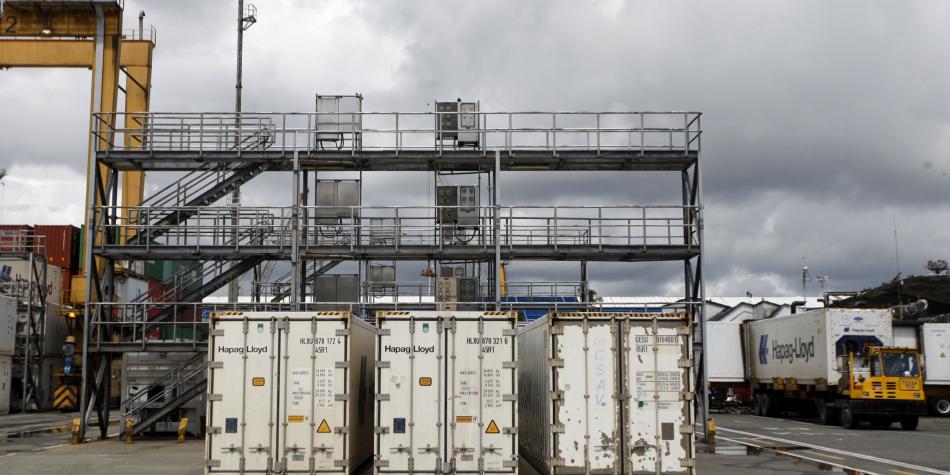
The Pandemic Revives The Export Debate
In Colombia there has always been debate about the export model due to the little outstanding figures and a hard indicator: the relationship between exports and population is very low with 620 dollars per year for each Colombian, against 1,250 in Peru and Ecuador, 3,500 in Mexico and Chile and 10,000 from Korea. In the United States, it is almost $ 5,000 per capita.
And in its equivalent to gross domestic product (GDP) the proportion is also low: 16 percent, against 24 percent in Peru; Chile, 28 percent; Costa Rica, 34 percent; Mexico, 39 percent; Portugal, 43 percent, and Germany 47 percent.
The debate heats up. A few weeks ago, the former Minister of Finance 1990-94, from the government of César Gaviria, Rudolf Hommes, took charge of bringing the issue up to date, with the dose of sarcasm that has always characterized it.
He said: “No exports or peep. If we want the economy to grow vigorously in 2021, the government and the private sector will have to make a great effort to generate exports. We are doing very badly… ”. At the end of 2020, foreign sales fell 21 percent.
Another former Minister of Finance and former Head of Planning, José Antonio Ocampo, has warned about the deindustrialization process, for which he suggests a policy of export diversification. He pointed out that the export development expected from the economic opening did not take place.
Is Hommes right? Does Ocampo have it? Together or neither and rather exaggerate the note?
The figures are there
In 2010, exports of goods amounted to 39,800 million dollars, of which 14,350 million (36 percent) were other than fuels; in 2014 they went to 54,800 million, with 18,300 million (33 percent) non-mining.
Then, in 2018 it reached 41.9 billion, with 16.2 billion (45 percent) in non-mining companies. In 2019 they fell to 39,500 million and non-mining companies were 17,400 (44 percent). In 2020, in the midst of the pandemic, they continued to fall to 31,050 million with 17,600 million in non-traditional companies that reported an increase of only 1 percent.
However, if gold and gemstones are excluded, the decline is 6 percent. The drop is general and the relationship between traditional and new remains 56 to 44 percent, respectively.
Although the total figures agree with what Hommes said, it must be taken into account that the dramatic fall in oil and coal prices and the lower volumes exported in 2020, explain most of it.
Ocampo warns that the currencies of the oil bonanza 2010-2014 were not sown to create a productive base. But is the fault of natural resources?
Thanks to the fact that in 2012, 42,000 million dollars entered the country in exports of oil, nickel and coal, the imports of the industry amounted to 40,000 million dollars, but not properly in technology and capital goods, but most of it in operating equipment and durable consumer goods, favored by a revaluation of the peso in that five-year period.
Many industrialists left their productive work to become importers.
“A country exports what it has and is competitive. Unfortunately, the revaluation of the peso hit the ability to export manufactures very hard and what is left is very little. And many companies decided to make up abroad and sell in the local market.
Without investment, it is impossible to recover that capacity in the industry and this is a process whose results do not occur overnight, ”says Javier Díaz, president of Analdex, the base union of exporters, who has just turned 50 years old.
“Here we need an export culture,” is the phrase of the Minister of Commerce and Industry, José Manuel Restrepo, referring to the fact that businessmen say that the domestic market was their objective and exporting was one of their last priorities.
The scheme to promote ‘Internationalization factories’ created by the Duque government is an action in that sense, but its results will not occur in the short term as it implies a change of culture in favor of producing for export, as does the program of productive transformation carried out by the Ministry, which is a more advanced stage of the “world class sectors” at the end of the first decade of the century.
The Vallejo Plan reform created in 1959 also fits in, through which companies add value to imported inputs that are re-shipped abroad. And that has just been relaunched and streamlined as ‘Plan Vallejo Express’, with the import-export philosophy: if raw materials are imported, the export commitment is 60 percent of the goods produced while the remaining 40 percent is you will be able to market in the national market.
At that time, the entrepreneur must pay the corresponding customs taxes, and Procolombia is in charge of promoting the program.
The trade problem is not just for Colombia and more evident at this time of pandemic. The International Monetary Fund (IMF) projected a drop in world trade of 12 percent in volume for last year, but the World Trade Organization (WTO) has forecast a decrease of 13 percent in the baseline scenario and 32 percent in the most pessimistic.
The UN ECLAC predicted that the pandemic had begun a drastic reduction in Latin American exports.
Export or die
In addition to oil and minerals, Colombia registers a large concentration in its exports in a handful of products: coffee, bananas, palm oil and flowers, which over the years have been consolidated in the foreign market, all of them coming from the sector. agricultural.
And the reality is that for several decades now, no new lines have appeared that stand out in exports.
For example, clothing and apparel exports that one day promised a lot have entered the doldrums because there has been a structural change in that industry.
From the maquila model that China led a few decades ago, there has been a technological transformation. What role has Colombia played in it?
“Colombia has stayed in the fashion industry. In addition to limited innovation in technology and market techniques, design has not been effectively integrated with the production chain. We cannot compete if we import even the zippers and other basic inputs of the sector ”, is the appreciation of the businessman Mario Hernández, who has been in the industry for 40 years.
Exports of the so-called fashion system that includes garments, dresses and apparel and footwear leather goods, among others, barely reached 700 million dollars in 2020, with a fall of almost 25 percent. Four years ago it was over 1,000 million per year. Footwear fell 30 percent in the last year.
“In our country there are some new companies that export, but not sectors other than the traditional ones, which leaves much to be desired as a medium and long-term vision. A government like the current one makes a great effort, but the reality is that the collective effort is not noticeable in the private sector.
Only in coffee, flowers and bananas, and to a lesser extent sugar and palm oil, is there this joint business effort and the results are evident ”, is the conclusion of an academic study of the model, not yet official.
We cannot compete if we import even the zippers and other basic inputs of the sector, says businessman Mario Hernández, who has been in the industry for 40 years.


